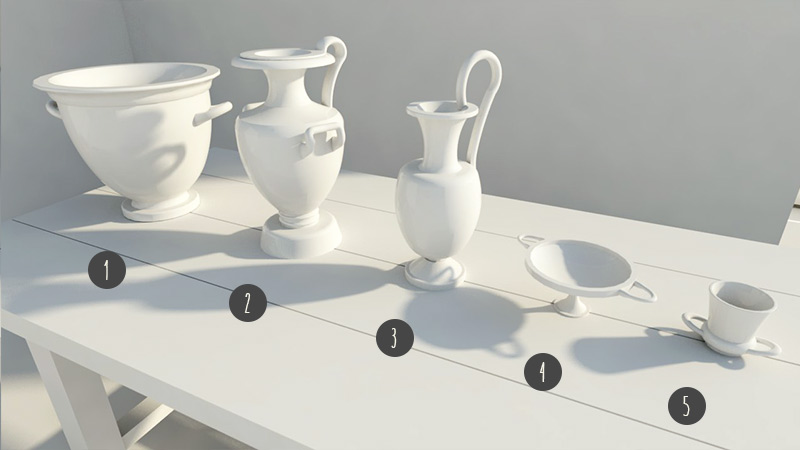The Spartan suit
The new tactics of hoplite warfare developed during the Peloponnesian War – particularly the need for greater flexibility during combat and for covering large distances during campaigns –, the financial problems of the warring sides and other factors, led the Spartans to the full abandonment of the torso armour before the battle of Mantinea (418 BC).
This possibly took place at the first years of the Peloponnesian War and soon all the hoplite armies followed this trend. This trend remained until around the battle of Leuctra (371 BC). After this chronology, body armour was reintroduced in the Spartan and the other Greek armies, especially the elegant muscled thorax.
Periklis Deligiannis, On the armour of the Spartans and other Lacedaemonians -p.3
The Aspis
An aspis, sometimes also referred to as a hoplon, was the heavy wooden shield used by the infantry in various periods of ancient Greece. The aspis measured at least 0.91 meters in diameter and weighed about 7.3 kilograms, and it was about 25–38 millimetres thick.
- Porpax : A bronze band for the arm.
- Carrying cord : The carrying cord is jute or hemp--with the cord passing across the front of the shoulders.
- Antilabe : A handgrip (leather or cord) near the edge.
In one such case, a spartan was said to have painted a life size fly upon his aspis. Asked why; the warrior stated that he intended to be so close to his foe, that the fly would appear giant. Plut.,Ap.Lak.,Anon.41=Mor.234C-D.
Laconian Pottery
- Bell Krater (~35cm to ~56cm): A large vase which was used to mix wine and water.
- Hydria (~27cm to ~48cm): Three handles pottery for water-carrying.
- Oenochoe (~20cm to 40cm): A wine jug and a key form of Greek pottery.
- Kylix (~12.4 cm, 250ml): The most common type of wine-drinking cup.
- Lakaina (~10cm): A Laconian drinking vessel. For Athenaios the term is being based on the shape's origin in Sparta, in the region of Laconia. Modern research supports this view. Read More
The Laconian-system roof
"The Laconian system is well documented in the numerous fragments found in the excavations of the sanctuary of Artemis Orthia at Sparta [...] These fragments demonstrate that Laconian-system roofs, as known at Sparta, have a limited range of elements. The pan tiles are large and concave, the cover tiles narrower and convex, the ridge tiles convex with openings for the tiles;"
3D Modeling based on Defining regional styles in archaic greek architectural terracottas, pp. 13-15 (Nancy A. Winter), Fig.1 "Roof of the Heraion at Olympia" by K. Iliakis.
The Aulos
An aulos was an ancient Greek wind instrument, depicted often in art and also attested by archaeology. You can hear some aulete (aulos player) here : Cristian Gentilini, Conrad Steinmann, Barnaby Brown, Dr. Stefan Hagel
Ephor. ap. Plb. 4.20.5f. = FGrH 70 F 8 reports that the Spartans had introduced the aulos instead of the trumpet (salpinx) long ago (elsewhere the trumpet was quite popular in the army in Xenophon's day, cf. e.g. X, An. 7.4.16). [...] Later Polyaenus (1.10) considers that marching to the sound of the aulos was invented by Heraclids and that the absence of aulos-players led to the defeat at Leuctra (revealing how characteristic of Sparta the aulos was considered by the later idealizing tradition).
Michael Lipka, Xenophon's Spartan Constitution (Berlin/New York: de Gruyter, 2002) - p. 22
The Doric order
The Dorian peoples had a seminal influence on the later development of Greek art. Indeed, the crowning achievements of Greek art and architecture from the 5th century BC arose from the combination of the art of the Doric peoples (with its restraint, power, and monumentality) and that of the Ionian peoples (with its grace, elegance, and ornateness). The massive and simple Doric order of architecture earned its name from its origin in the Doric-populated cities of the southern Aegean.
Encyclopædia Britannica Online





